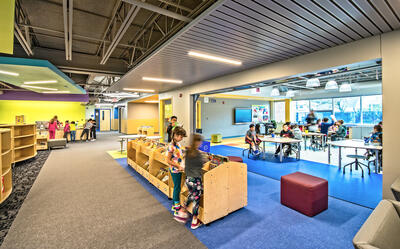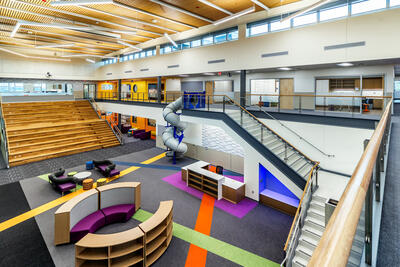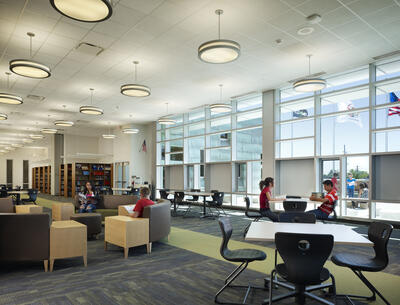Reading Curriculum
Lincoln Middle School Reading Lab
What is The Reading Lab?
The Reading Lab at Lincoln Middle School provides students with an opportunity to bridge the gap in reading, between word identification and deriving meaning from the written word. Students will make measurable gains in their reading through individualized goal setting and instruction, thus helping them grow academically and easing their transition to high school.
What is the Goal of the Reading Lab?
The goal of the Lincoln Middle School Reading Lab is to help students improve their reading abilities and master more challenging content. The lab provides strategic reading instruction through exposure to various types of reading material with the emphasis on informational text. The Reading Lab and the Humanities Program will work in collaboration to partner and provide a comprehensive literacy experience for each individual student. Students learn to construct meaning through words and will be expected to take responsibility for their work ethic as well as the quality of their work. This enables students to experience success across the curriculum.
Components of the Reading Lab
Strategic reading instruction
- Predicting
- Summarizing
- Questioning
- Inferring
- Imagery
- Connecting
- Vocabulary
- Cause/Effect
- Main Idea
- Supporting Details
- Sequencing
- Fact/Opinion
- Fluency- Six Minutes
- Great Books
- Critical Thinking
- Read Naturally Program
- Jamestown Program
- Aims Web Program
How does the Readers' Lab accomplish these goals?
- Students receive modeled instruction while reading material that is appropriate for their independent and instructional reading levels
- Students rotate through learning centers where they continue to practice and develop reading strategies independently and in a small group setting
- Students maintain portfolios to record their progress
- Mutli-level, student-centered learning environment
- Teachers work with all levels of students
- Small group, student-led discussions on articles read
- Students rotate through centers based on reading levels
- Students conference monthly with a teacher on their progress of individual goals
- Diagnostic testing weekly and benchmarking monthly
- Students choose assignments (ways of showing their knowledge and understanding)



